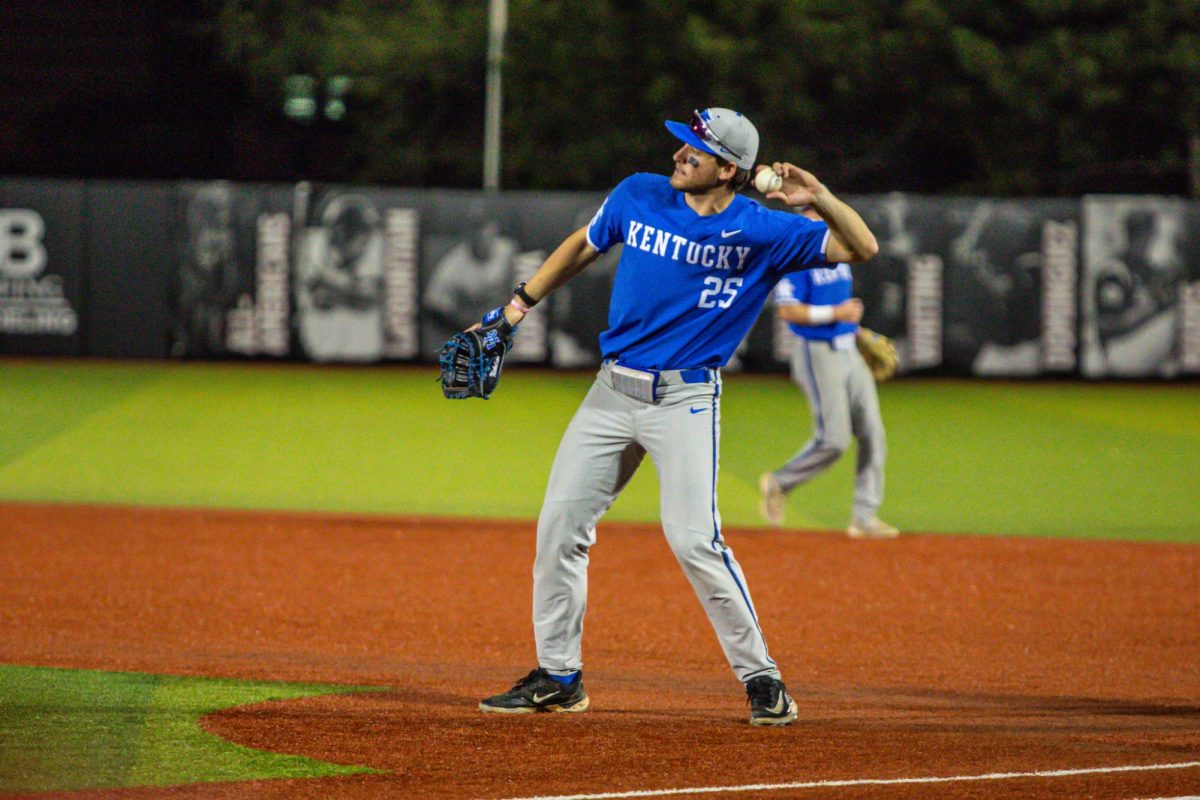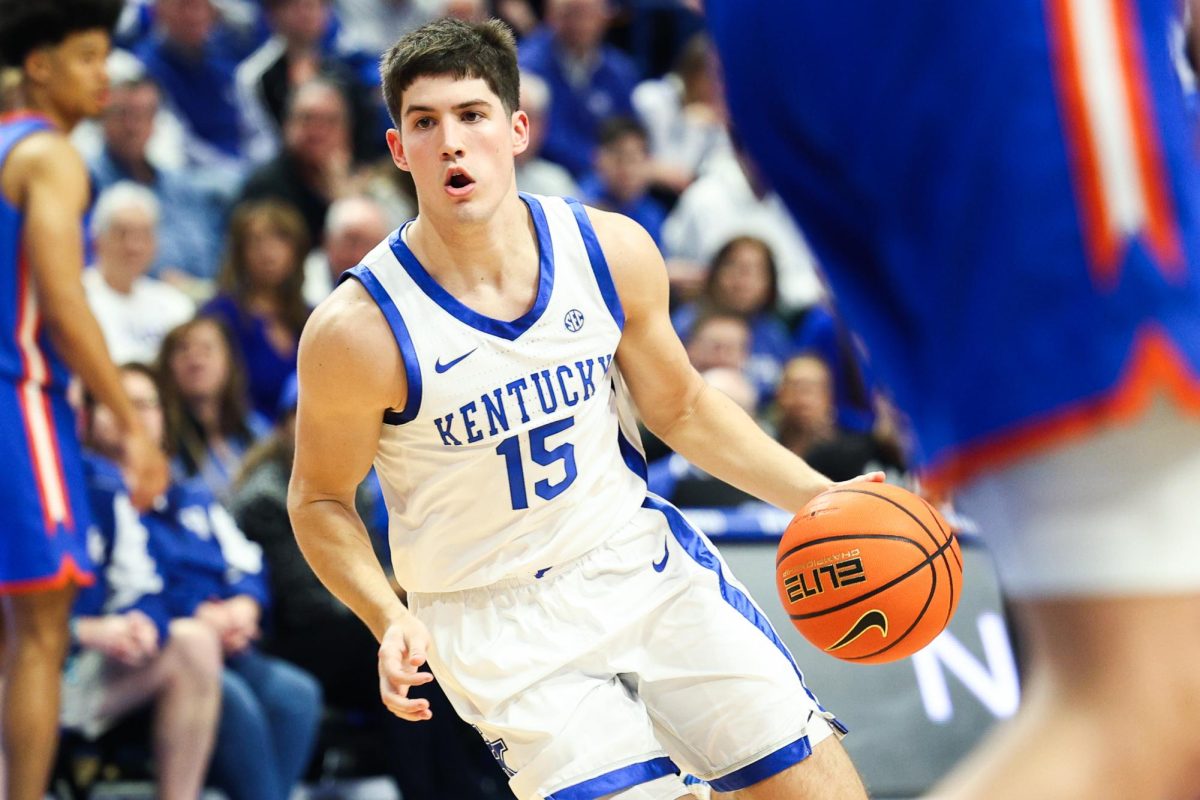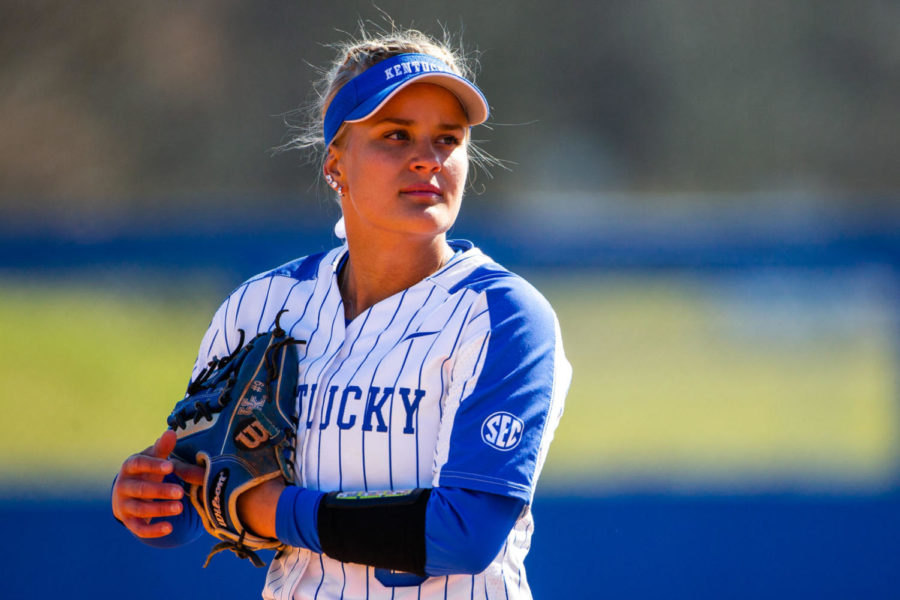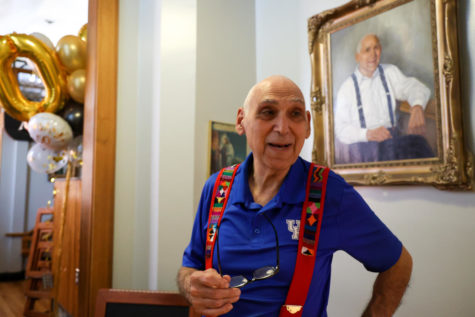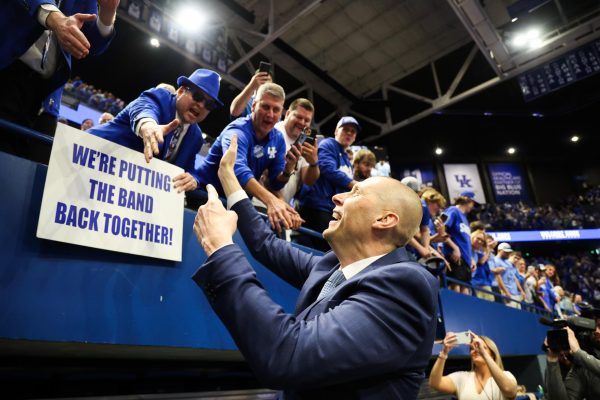UNDAUNTED: The body image issue
April 19, 2021
From volleyball’s spandex to gymnastics’ leotards, track’s high-cut bottoms to swim’s kneeskins, close-fitting uniforms are designed to help athletes compete and feel comfortable in their bodies.
But female athletes say over and over again that spectators see the uniforms as permission for their bodies to be objectified.
“Our bodies are on full display at all times, and that’s a choice that we make and to be quite honest, never even crossed my mind as a second thought,” libero Maddie Berezowitz said. “But with that being said, we also are hyper aware of what our bodies look like at all times.”
Gymnast Josie Angeny experienced this vulnerability firsthand after a difficult freshman year, when she dedicated herself to the gym in the offseason.
“Even some of the broadcasters mentioned how I’ve gotten in better shape, and they’ve mentioned how like, I just looked so much more prepared for the season,” Angeny said “So they’ll say things kind of around that, where girls can take that any way that they want to.”
For many female athletes, comments like that can lead to doubts about their appearance. Some worry that their physical strength – a benefit on the field – makes them less girly, while others are pressured to be thinner and faster.
“Since our sport is literally down to like hundredths of seconds, it’s almost like you have to be perfect at everything you’re doing in order to shave off those hundredths of seconds,” Abby Steiner said.
Steiner receives lots of comments about her arms but brushes it off because the commenters are “always someone who has never participated in the sport.” She feels comfortable going to coaches or other teammates to discuss the shared experience of unwanted comments.
“I’ve seen people who have commented like,’ Oh, she’s so muscular, she looks like the German sprinters who were caught for doping with how muscular she looks.’ There are always comments, not only about muscles, but also interesting comments about just appearance in general,” Steiner said.
Within the sport, athletes have respect for their teammates’ physical strength.
“I think it’s seen as a sign of something amazing,” Steiner said. “People will make positive comments on muscles and weight room gains and stuff like that, everyone always cheers people on to make those gains versus if you’re coming in from the outside other people might have negative comments to say.”
Swimmers usually start weightlifting in college, so the changes can be startling
“A lot of girls are like, ‘Oh no, my arm muscles look too big in that picture’ or there’s some girls on deck that are really tall and everybody talks about it, because they’re really tall and obviously it’s something that’s going to help them swimming,” said sophomore IM swimmer Lauren Poole. These body comparisons are exacerbated by the exposed nature of swimsuits.
“I think it really sucks because on the pool deck, I think a lot of people are talking about what other people look like because it’s right there in front of you,” Poole said.
Some body image issues are unique to a specific sport. For volleyball, it’s height.
“Oh my gosh yes, 100%,” Berezowtiz said of society reacting weirdly to tall volleyball players. As a libero, Berezowitz is shorter than most volleyball athletes and is “very thankful” she doesn’t have to deal with those challenges – but her teammates do.
“I have teammates who are 6’5” – you don’t even see a 6’5” dude walk down the street very often, much less female,” Berezowitz said. Height can be a touchy subject in volleyball, she said, and her teammates don’t often like to admit that they are insecure – “I don’t know if that’s the right word” – about how tall they are.
“They’re aware that men might not see them the same,” Berezowitz said, and they often get stares out in public.
“Walking around in the airport or at a mall with my friends, I mean they just get stared at. They’re just huge, especially like three girls that are all above six foot, naturally you’re going to get stares,” Berezowitz said. “So, I don’t know if that can really be normalized but it’s more just accepting that.”
Berezowitz said balancing strength and looks is ubiquitous in her sport.
“That’s how every volleyball player I’ve ever known feels. But in the end, it’s ultimately, we need to perform at our best level and that’s kind of on the forefront of our mind all the time,” Berezowitz said. “…the way society views us almost has to take a backseat, just in terms of we need to perform and if that means being a little stronger than our female peers, that’s just the way it is.”
Lauren Johnson, a softball player, said body image was more of a challenge when she was younger because the culture has since shifted.
“I feel like the trend was that you wanted to be skinny, you wanted to look like a model, but then within the recent years, it’s transformed from that to wanting to be strong,” Johnson said, which she believes is helpful to athletes.
“I think even then taking that mindset of like what other people think and what you think – like I’ve shifted from the mentality of what I look like in a dress to how does my body help me perform, which I think is really important,” Johnson said. “Especially in our sport, having muscle is important because you want to be powerful.”
Softball coach Rachel Lawson said the pressure on female athletes to conform to certain body images was definitely the culture when she was playing in the 80s and coaching in the early 90s, but hopes that those ideas have changed as strong female athletes have shown there’s not one way to be a female athlete.
“You come into a lot of different packages, sizes, career paths and that didn’t happen early on,” Lawson said. “I think a lot of that is the exceptional fight that the women have had that started a long time ago that just continues.”
In track and field especially, Steiner said professional athletes speaking out makes a huge difference in how women approach body image issues.
Mary Cain, once the fastest girl in America and a member of team Nike, detailed her struggle with disordered eating in an op-ed for The New York Times where she attributed her collapse to pressure from male coaches at Nike to get thinner and thinner. Runners like Olympic hopeful Starla Garcia and National Association of Intercollegiate Athletics champion Hannah Fields shared similar stories in hopes of shedding light on the pervasive issue.
“It’s amazing that those athletes are open to sharing those stories because it makes you feel as a female athlete like you’re not alone,” Steiner said. “…it really creates kind of a sense of community, where you’re like I’m not the only one feeling this, and look at all these amazing runners who have struggled with this but all of the amazing things that they’re doing.”
Though media exposure can help right some of the wrongs in the intersection of sports and body positivity, some media commentary exacerbates the problem.
When COVID-19 struck, many athletes dedicated their spare time to working out. Berezowtiz said some of her teammates came back transformed and were asked about the changes in their appearance by interviewers.
“I don’t know if that’s a good thing or a bad thing but it’s just kind of a personal thing,” Berezowitz said. “I don’t know if that’s if that same question would have been asked to their male counterparts. ‘Oh, I see you lost a lot of weight’ – so that was kind of interesting to me, I don’t really know if that was appropriate.”
Angeny got the same treatment from the media when she came back this year.
“Sometimes, it doesn’t make me feel like better about myself a little bit but it just like makes your mind roll all the time,” Angeny said. “It’s super weird to me… says a lot about what they think about the sport and how it’s supposed to be, and just comparing it to how they speak about men’s sports.”
She didn’t notice the change in her body at first because it happened over time, and second guessed herself when commentators started talking about her physical changes.
“I didn’t really notice how big of a difference and I was proud of myself, but then whenever I saw everybody else noticing I got like embarrassed at first,” Angeny said. She said comments on body size and shape are a weird gray area in sports.
“Obviously the guys on their roster, it says their weight, which they wouldn’t do that with [girls]. It’s kind of like the unwritten rule of they’re not really supposed to, which guys have body image issues too,” Angeny said. “So that doesn’t really help.”
But she thinks comments on image and weight are even more common for women, and it shows that people are more occupied with their misconceptions of the sport than reality.
UNDAUNTED, a series by Kentucky Kernel editor-in-chief Natalie Parks, explores the intersection of gender and athletics with testimony from eight UK athletes and coaches. Series installments will discuss body image pressures, unequal access, representation, mentorship and double standards between men’s and women’s sports.










































